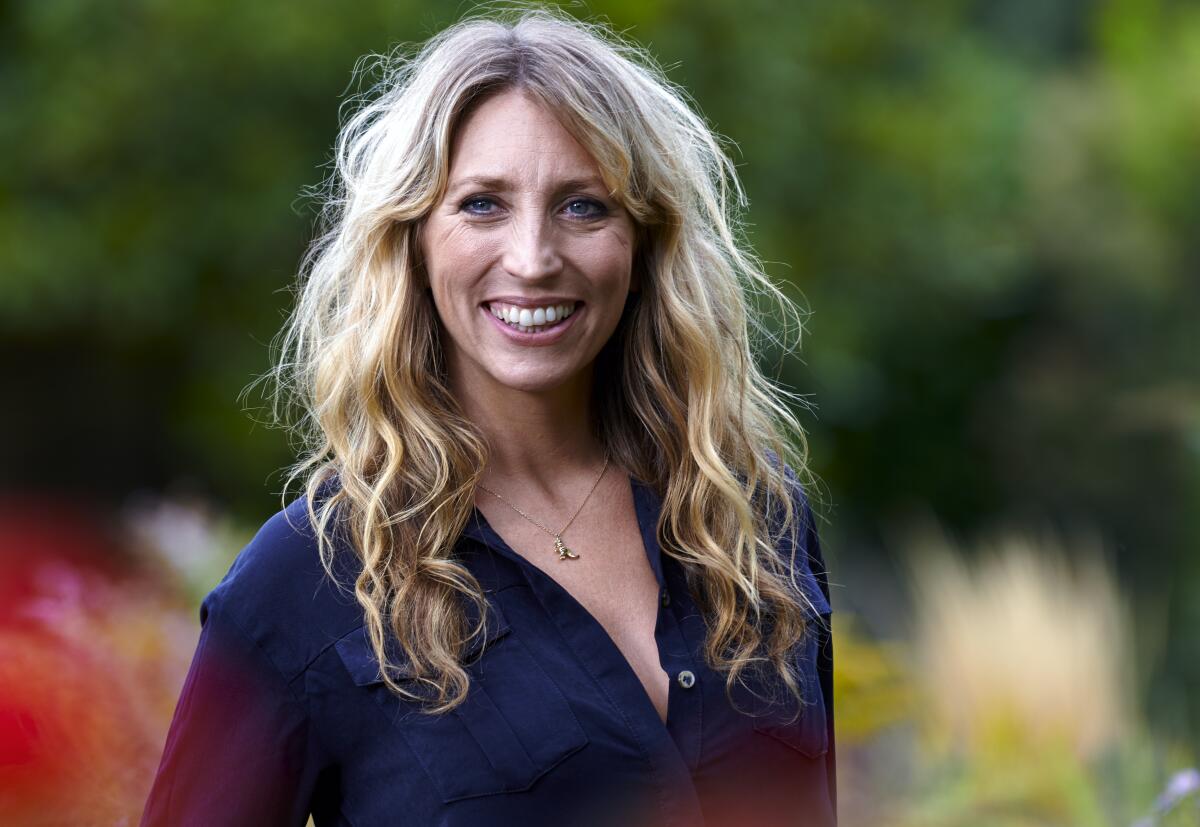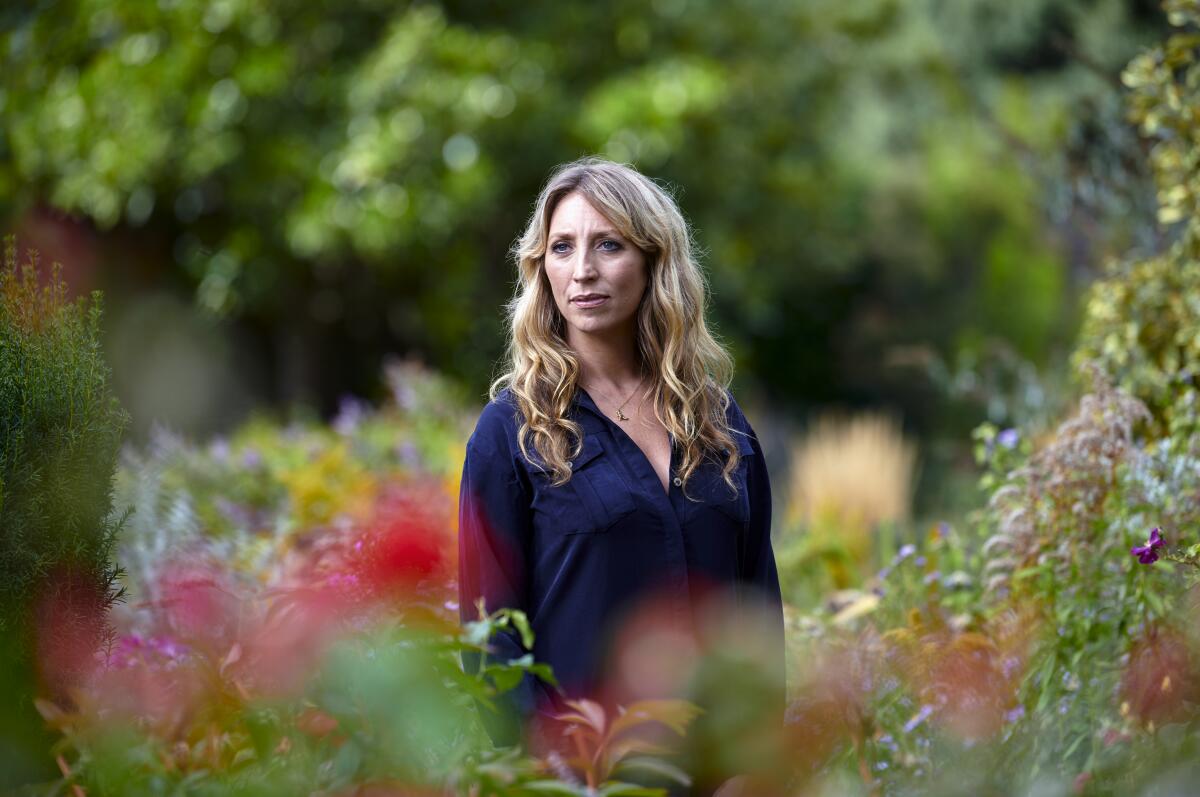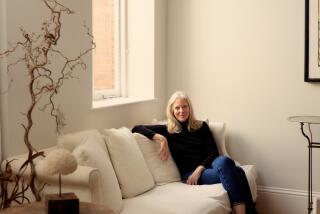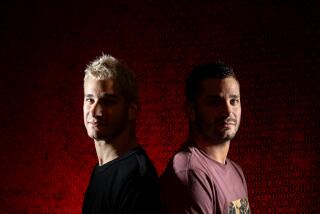‘Back to Life’s’ Daisy Haggard on taking humiliation comedy to new levels, plus free Frazzles

Daisy Haggard was in a pitch meeting with Harry Williams of Two Brothers Pictures, the producers of Phoebe Waller-Bridge’s “Fleabag,” when she realized that a door of opportunity might be closing. “I knew that Harry wanted to make something with me, but all of my [ideas] were being rejected,” Haggard says. “We drank some wine. Then I kept giving Harry more beer and ham croquettes. Then it all suddenly fell out of my mouth. I just said, ‘What if...?’”
She began describing a woman who would become the central character of her six-part series “Back to Life,” a woman returning home after doing time for a violent crime, making a valiant attempt to rejoin a world she left as a chirpy teenager and came back to as a half-formed adult.
“I’ve always been fascinated with how we give women more crap when they’ve done something bad — how we vilify them,” Haggard says. “The other thing I’m obsessed with are coming-of-age stories and adult beginners.”
“Back to Life,” which debuted Sunday in the U.S. on Showtime and received wide praise when it first aired this year in the U.K., stars Haggard as Miri Matesson, who is living with her parents in the tiny seaside town of her youth after 18 years away as a prison inmate. The coastal community where she grew up isn’t ready to embrace her as having paid her debt — hostile graffiti is scrawled on her front gate, the locals hiss epithets at her. As Miri struggles to fit in, the series’ tone toggles between surprising laughs, churning emotion and abject humiliation.
“Life is like that,” says Haggard. “The truth is that you go quite quickly through loads of emotions in life — and I really wanted to write something that did that.”
In the U.S., Haggard’s long, expressive face might be familiar to TV viewers as Myra, the mirth-free head of comedy at a fictional TV network on Showtime’s now-defunct “Episodes.” In the U.K., though, Haggard is known as a veteran TV and theater actress and, for J.K. Rowling fans, the voice of the Ministry elevator in two Harry Potter movies. Next year, she’ll co-star in the FX parenting comedy “Breeders” with Martin Freeman.
Recently, Haggard spoke by telephone about “Back to Life,” her early days as a poet and why she chose to do this 5 p.m. interview while standing outdoors in Peckham Rye park in Southeast London. “At 5 minutes to 5 p.m. my children both had screaming tantrums and I just had to make a run for it,” says Haggard. “There are a couple of drunks just behind me. I hope you can hear me properly.”
To write Miri, you met with previously incarcerated women. What sorts of things did you hope to learn?
[Our conversations] were less about the time in prison, more about about the life afterwards details. “What did you want to eat?” “What did you want to do when you first went home?” “What sensations did you want to feel?” “What was the most annoyingly difficult thing? Getting a bank card?” Or that feeling that you have something written on your face in a small town. It felt like everyone was looking at you — even if they weren’t.
One woman just wanted to eat celery and avocados. Fresh food. All those details we were really interested in because we knew it would make her feel real.
Talk about what you love about Miri.
“Back to Life” is about an eternal optimist. Every punch and hit she gets, she jumps back up again. She’s incredibly sweet. I hope that Americans will respond to Miri, that they’ll go on the ride with her. [She’s] a plucky heroine who’s done something terrible.
You wrote the script for “Back to Life.” That means you have no one but Daisy Haggard to blame for Miri’s shapeless clothes and her botched haircut.
I know. My friends tease me. They go, “Daisy, you had one shot. You could’ve been wearing Prada, dressing in glamorous, amazing outfits but you walk around in dungarees with the worst fringe and no makeup. You idiot!” But I’m very happy to be that idiot. The fringe cut — it going brilliantly wrong? It just felt very true. I have cut my fringe that badly before. I’ve been there.
When “Back to Life” was green-lighted, you were eight months pregnant with your second child. Talk about time management.
Having waited years when I had all the time in the world, it all happened when I had no time. I’d have a baby on my boob and one hand on the laptop. There’s quite a few selfies on my computer that I took of me and my baby at a cafe. I was like, “C’mon. You should be part of this.” I spent a lot of single life lying around in my [underwear], complaining about how I didn’t have any time. I found that writing the whole series in the first year of having two kids made me find the time and make it mean something.
Your father is Piers Haggard, a stage, film and TV director. Your grandfather was actor and poet Stephen Haggard. Your great-great-great uncle was adventure author H. Rider Haggard. What did coming from a creative family teach you about making something from nothing?
It was my mum really. We weren’t allowed to watch much telly. It was just, “Go off and play. Make your own things.” If you wanted a Barbie, it was, “Make one out of paper if you want one.” I remember once I was at a jumble sale and I managed to get an old, slightly damaged naked Barbie. Then all I wanted was a Barbie Jacuzzi and my mum just handed me a margarine container and said, “There you go!”
How old were you when you first took in your Ddad’s nightmare-inducing oeuvre?
We watched inappropriate horror films, things that my dad directed, at quite a young age. He did a film called “The Blood on Satan’s Claw,” which is quite a cult favorite here. And he did a film called “Venom,” about an escaped black mamba [snake]. He would be quite annoyed that I’m telling you this. He also did [Dennis Potter’s classic BBC drama] “Pennies From Heaven.”
Did he encourage you to write?
My dad always wanted me to write much more than he wanted me to act. I used to write poems all the time. That’s how I’d express myself when I was angry at him. I’d very dramatically hand him a poem that expressed my emotions. I think he always thought that’s what I was going to do.

Is that how you sharpened your Twitter skills?
[My Twitter feed is] always really, really silly. I do it every now and then when I think of something. Then I ignore it for ages. I was trying to get everyone to watch “Back to Life” [in the U.K.], so I was tweeting all the food things they can eat while they watched it. Then that caught on and I got some free Frazzles.
Frazzles? What are Frazzles?
Frazzles. It’s a really basic bacon crisp. I got sent loads of Frazzles. Again, my friends were like, “Daisy, you had one shot. You could have said, ‘I really like Stella McCartney dresses.’ But no, you go for a very cheap crisp. Now you’ve got eight free packets of Frazzles instead of eight bottles of really beautiful Champagne.”
You’ve said you are hoping for a second season. What appealed to you about co-writing and starring in every episode?
Why not do it all? I’m obsessed with tallying what I like and what I don’t like, and I’ve always wanted to make a show that was to my taste, write the kind of part that I’d want to be given. But I never thought I’d get this experience. Not many people ever do. So this is sort of a dream come true.
More to Read
The complete guide to home viewing
Get Screen Gab for everything about the TV shows and streaming movies everyone’s talking about.
You may occasionally receive promotional content from the Los Angeles Times.






